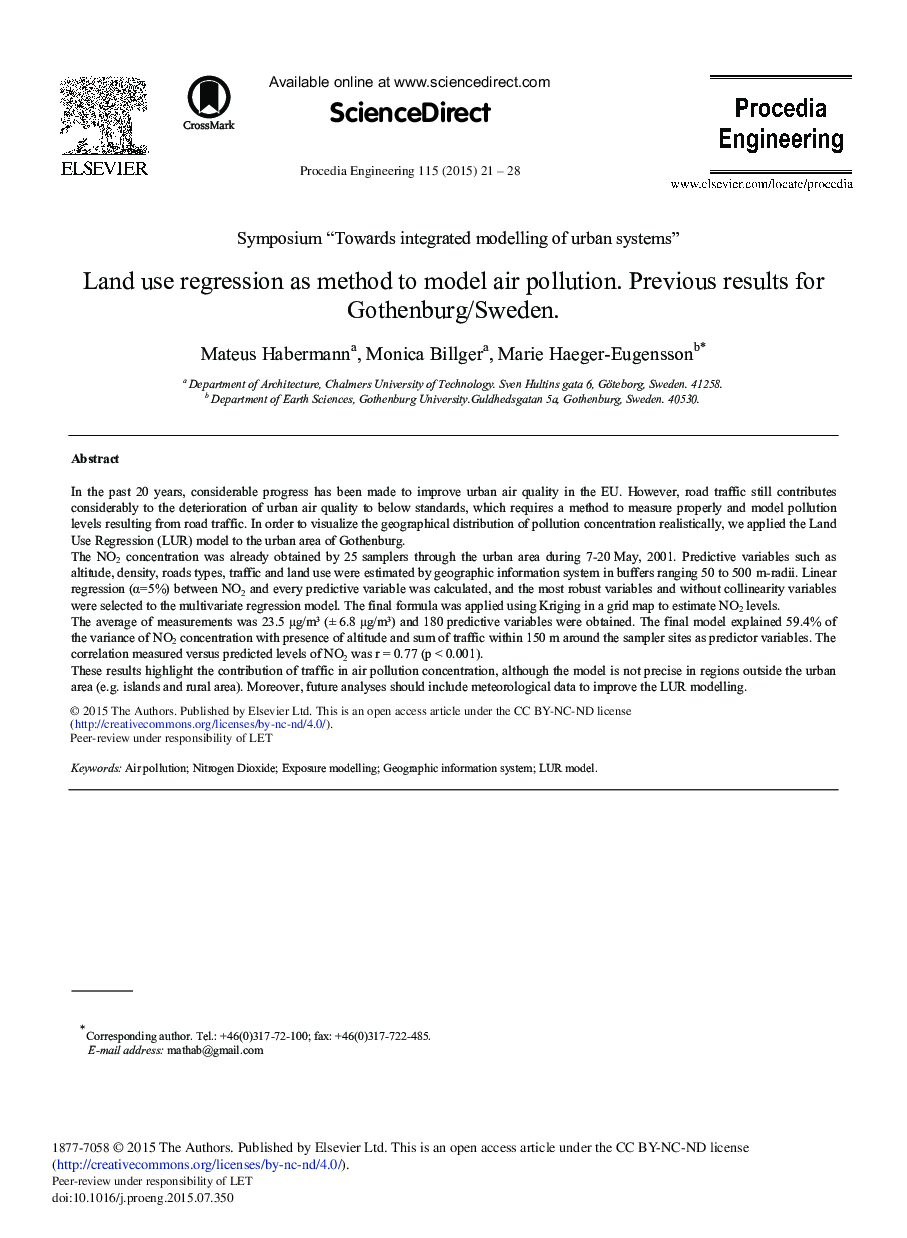| Article ID | Journal | Published Year | Pages | File Type |
|---|---|---|---|---|
| 855465 | Procedia Engineering | 2015 | 8 Pages |
In the past 20 years, considerable progress has been made to improve urban air quality in the EU. However, road traffic still contributes considerably to the deterioration of urban air quality to below standards, which requires a method to measure properly and model pollution levels resulting from road traffic. In order to visualize the geographical distribution of pollution concentration realistically, we applied the Land Use Regression (LUR) model to the urban area of Gothenburg.The NO2 concentration was already obtained by 25 samplers through the urban area during 7-20 May, 2001. Predictive variables such as altitude, density, roads types, traffic and land use were estimated by geographic information system in buffers ranging 50 to 500 m-radii. Linear regression (α=5%) between NO2 and every predictive variable was calculated, and the most robust variables and without collinearity variables were selected to the multivariate regression model. The final formula was applied using Kriging in a grid map to estimate NO2 levels.The average of measurements was 23.5 μg/m3 (± 6.8 μg/m3) and 180 predictive variables were obtained. The final model explained 59.4% of the variance of NO2 concentration with presence of altitude and sum of traffic within 150 m around the sampler sites as predictor variables. The correlation measured versus predicted levels of NO2 was r = 0.77 (p < 0.001).These results highlight the contribution of traffic in air pollution concentration, although the model is not precise in regions outside the urban area (e.g. islands and rural area). Moreover, future analyses should include meteorological data to improve the LUR modelling.
